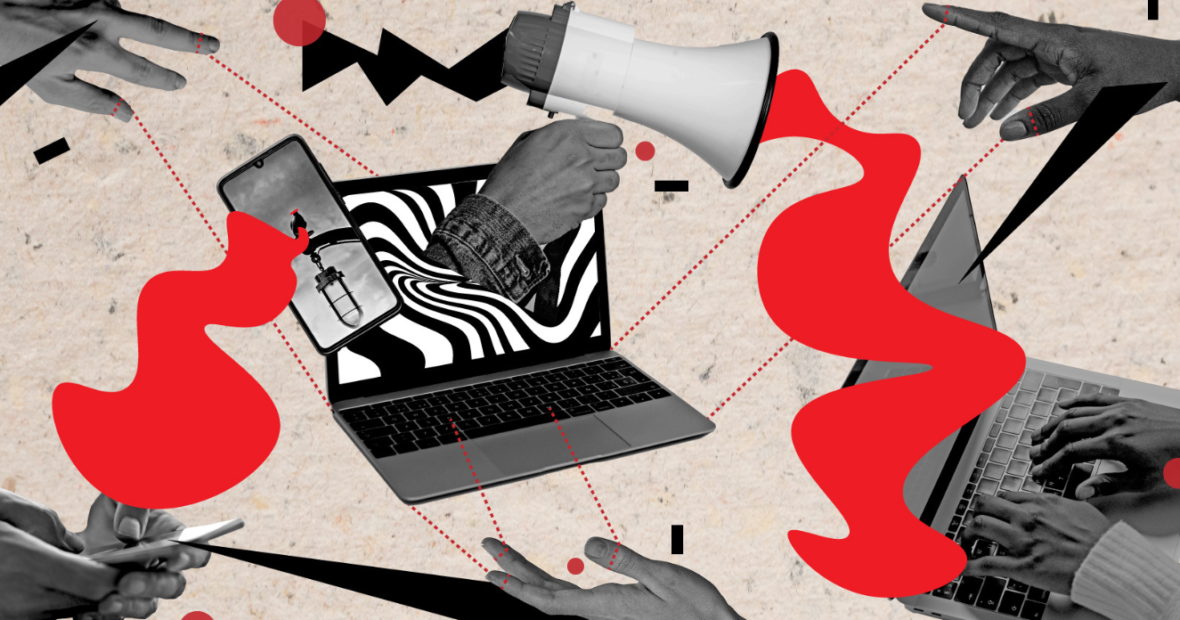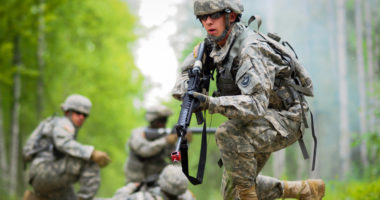“In war, truth is the first casualty” is perhaps one of the best known aphorisms about armed conflict. Information operations have long been conducted to influence or mislead military adversaries or civilian populations during war. However, the instantaneous transmission of information from any distance – through social media platforms and messaging apps – has changed the scale, speed, and reach of information operations. Today, generative artificial intelligence provides seemingly infinite possibilities to create misleading or dangerous content. In light of these developments, states (para. 33 and 57), humanitarians and human rights advocates have voiced concern that spreading harmful information risks inciting violence, causing distress, increasing vulnerabilities, denying access to essential services, and may also undermine or disrupt humanitarian operations. Worryingly, the UN Special Rapporteur on the Freedom of Expression has found that in today’s armed conflicts, disinformation and hate speech are “increasing[ly] focus[ed] on civilian populations rather than military personnel”.
In light of this reality, we must recall that there is a red line between an information operation that complies with international humanitarian law and one that violates it. In this post, ICRC Legal Advisers Tilman Rodenhäuser and Samit D’Cunha explain some of the legal boundaries of information operations under international humanitarian law (IHL) through four examples. Limits on information operations under public international law as applicable outside armed conflict, or under human rights law during armed conflict, are not examined in this post.
There is no carte blanche for information operations during armed conflict
The employment, during military operations, of information-related capabilities to influence views, attitudes, or behavior of adversaries or civilian populations in order to achieve strategic or military aims are commonly defined as information operations (see for instance China, France, and the United States). Non-state armed groups, too, have employed information operations, with some reportedly identifying “psychological warfare” as “the most advanced weapon”.
At times, it has been argued that IHL is ‘remarkably lenient’ on disinformation. And indeed, it is often emphasized in military manuals and some expert commentary that “propaganda, even disinformation” to “provoke the local (enemy) population to oust the enemy government” are unproblematic under IHL. This might, in part, be explained by the fact that ‘misinformation’ to mislead an adversary is explicitly listed as an example of non-prohibited ruses of war under Article 37 of Additional Protocol I.
That being said, as explained in this post and in more detail elsewhere, military manuals and expert analysis are similarly clear that IHL imposes significant limits on information operations. For instance, and as explicitly recalled in Article 37 API, misinformation as a ruse of warfare is only permissible if it “infringes no rule of international law applicable in armed conflict”.
It is true that IHL contains no provision that protect ‘the truth’, democratic processes, and the freedom of expression (as human rights law does, including during armed conflict). IHL also does not prohibit parties from aiming to influence civilian populations, even inciting them to oppose a party to an armed conflict. On the other hand, IHL does contain a number of rules that limit information operations to protect the life and dignity of persons. These rules are universally agreed and bind states and non-state parties to armed conflicts.
Encouraging unlawful violence
Encouraging violence is pervasive during armed conflict.
Today, soldiers will connect on digital platforms, follow social media channels, or share content on messaging apps that are used to encourage the war effort. Politicians have used similar platforms to call for the eradication of the adversary or specific populations, and civilians express their outrage, and at times hatred, against the ‘enemy’. In some cases, social media platforms have changed their policies to permit some hateful posts during war.
While armed conflicts are defined by violence, all states have agreed that even wars have limits. States have undertaken to respect and ensure respect for these limits, namely IHL. In fact, IHL requires each party to an armed conflict, not just states, to “ensure respect for international humanitarian law by its armed forces and other persons or groups acting in fact on its instructions, or under its direction or control”. This obligation requires, first and foremost, that civilian or military leadership of a party to an armed conflict must not order or encourage IHL violations by their own forces. In addition, the International Court of Justice found that a party to an armed conflict must “not encourage persons or groups engaged in the conflict […] to act in violation of the provisions of [IHL]”. This finding was made specifically with regard to information operations encouraging an armed group to conduct IHL violations in “circumstances where the commission of such [unlawful] acts was likely or foreseeable”.
As a result, using digital platforms or messengers to encourage violence against civilians, against civilian objects, or against wounded, sick, or detained enemy soldiers is prohibited.
Publishing images of prisoners of war
Sometimes, the spread of factually correct information may appear harmless; but it is nonetheless prohibited during war. A good example is the publishing of images of prisoners of war (POWs). Article 13 of the Third Geneva Convention expressly prohibits exposing POWs to “insults and public curiosity” – a similar protection also exists for civilian protected persons under the Fourth Geneva Convention. Indeed, exposing prisoners of war to insults and public curiosity was a practice at least as old as the ancient Roman Republic – where prisoners were subjected to degrading displays of Rome’s supposed superiority. The drafters of the Third Geneva Convention – which was adopted long before the advent of modern communications technology – outlawed this practice against POWs. The rule aims to protect POWs and civilian internees from being paraded through the streets or exposed to the taunts by the local populations.
But what about just publicly sharing images of POWs, recordings of their interrogations or private conversations, or letters or text messages written by them? In recent conflicts, images, videos, and private messages of POWs have been widely shared on various digital platforms. Does this also run afoul of the prohibition to expose POWs to public curiosity?
In many cases, the answer is yes. As a colleague explained elsewhere, the prohibition of exposing POWs to public curiosity is driven by three concerns: first, the desire to preserve the dignity of military personnel who have surrendered or been captured, second, to protect them from harm during their captivity and after they are released, and third, to protect their families. Indeed, any sort of identifying data can, when publicly shared, risk demonizing or shaming prisoners of war, and even put their lives, or the lives of their families, at risk. Seen in this light, we can see how the seemingly innocuous sharing of information on social media or other digital platforms can have results very similar to precisely those the drafters of the Geneva Conventions sought to put an end to in prohibiting exposure to public curiosity.
Spreading fear and terror
During armed conflict, fear and terror are often used to paralyze the adversary’s decision-making or break their will to fight. As with other forms of information operations, fear as a method of warfare has ancient beginnings. The Mongol Empire, for example, found that fear was just as effective as defeating their enemies in pitched battle. However pervasive the harnessing of fear may be in warfare, and regardless of its utility, IHL imposes important limits to its use.
For example, acts or threats of violence the primary purpose of which is to spread terror among the civilian population are prohibited under IHL. In a landmark judgment at the International Criminal Tribunal for the Former Yugoslavia, a commander who intentionally spread fear among the inhabitants of a city to “rid it” of its population and make it “safe for his children’s children” was found guilty of war crimes. In the digital space, spreading fear and terror in this way is similarly prohibited.
Take the example of hacking into communication networks to propagate false air raid alarms. Such cyber activities could be unlawful when they are designed to keep the inhabitants in a state of terror, or to displace them.
While IHL does not outright prohibit spreading fear among the armed forces of the adversary, it also imposes limits. Threatening to kill, rape, torture, or ill-treat captured or wounded soldiers is a violation of IHL; declaring that no-quarter will be given to the adversary (meaning to conduct hostilities on the basis that no surrender will be accepted) is equally prohibited. Using information operations to diffuse these messages is consequently also unlawful.
Undermining humanitarian operations
Humanitarian organizations operate in some of the world’s most dangerous places. For those who are mandated to act neutrally and impartially to protect and assist people on both sides of a frontline, trust in their neutrality and impartiality is indispensable. Spreading information that purposefully undermines the perception of their neutral, impartial, and independent work will affect their humanitarian operations – and may even put the lives of humanitarian workers at risk. A compromised security situation as a result of an information operation targeting humanitarian organizations can quickly halt humanitarian personnel from leaving their offices, distributing lifesaving assistance, visiting detainees, or bringing news to people who have lost contact with a family member.
IHL does not protect impartial humanitarian organizations against criticism or the expression of anger by authorities or beneficiaries. For example, any misconduct or the misuse of funds must be called out, and dissatisfaction must be articulated. However, humanitarian operations, and humanitarian personnel, must be respected and protected (Article 71 Additional Protocol I, Rules 31 and 32 ICRC Customary IHL Study). This means that belligerents must not harm them in any way and must protect them against harm by private actors (see further discussion here). Moreover, once impartial humanitarian operations have been agreed to by the concerned belligerent(s), these operations must be allowed and facilitated by the parties to the armed conflict and third states, subject to their right of control (Article 70, Additional Protocol I; Rule 55 ICRC Customary IHL Study).
Spreading disinformation – including by military or political leaders as well as through hiring private companies – that aims to obstruct humanitarian work is difficult to reconcile with IHL. First, such operations would unduly interfere with humanitarian activities, and not facilitate them. Second, some information operations may be expected to lead to violence against humanitarian personnel or the destruction of relief consignments. The obligation not to harm (i.e. respect) humanitarian operations would be violated when information operations may be expected to result in violence against humanitarian organizations, for instance by stirring up anger against humanitarian operations, or by creating false perceptions of their operations.
***
The aphorism about truth being a casualty in war has lost little of its relevance over the years; information operations have been used continuously since ancient times to influence both adversaries and belligerents’ own constituencies. However, the means and methods to deceive, mislead, or influence in war are not unlimited. States have agreed to legal limits for information operations during armed conflict. These rules must be respected, irrespective of which communication channels are used. Ultimately, while information operations are not categorically prohibited, their use must, like all actions during armed conflict, comply with IHL to protect civilians, detainees, medical and religious personnel, and the wounded and the sick from harm.
See also:
- Joelle Rizk, Sean Cordey, What we don’t understand about digital risks in armed conflict and what to do about it, July 27, 2023
- Pierrick Devidal, ‘Back to basics’ with a digital twist: humanitarian principles and dilemmas in the digital age, February 2, 2023
- Ramin Mahnad, Shielding prisoners of war from public curiosity, June 28, 2022







Comments